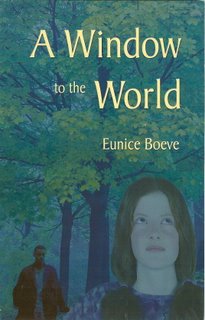Windows to the Past
When she was a little girl my mother would have loved these books. She read a lot, and passed that love of reading onto me. I still have her dog-eared, broken spine, illustrated, notes in the margins, and missing last few pages of Little Women. I would have to walk to the library to borrow their copy to finish it, many times over. It was printed in 1929, and it is inscribed "Xmas 1930" from Barbara Jean, her cousin.
Little Women, like Eunice Boeve's books, gives one a sense of history as it was lived. Could it be that this reading of history in literature is as important a lesson about our past as facts and figures in history class? It sure adds to it. When my children attended Waldorf schools history was interwoven with literature, such as enacting the Greek plays while studying ancient Greece. About the most dramatic thing I remember during a droning high school history class was the rumbling of a little earthquake in northern California. Do read Eunice Boeve's books. I bet you and your young teens will become fans!

A Window to the World
For a twelve-year-old Annie Duncan has a lot to worry about. What if her Pa never comes back from looking for gold in California? What if her Ma then marries “Bug Eyes,” Mr. Snell, who is bossy and thinks it’s okay to own slaves? What if her big brother Patrick can’t get to law school or her little brother Jackson doesn’t recover from his illness? Her biggest concern of all is whether she can help Henry, the run-away slave, when the slave catchers come knocking at the door of their remote West Virginia farm? Her only chance is for them to climb through her bedroom window her Pa built her before he left. Author Eunice Boeve tells a good story with a nicely laid-out plot and plenty of action to keep the reader turning the pages to find out what happens next in the likeable Duncan family. The reader will also be able to identify with protagonist Annie Duncan as she is not only brave and intelligent, but she is also compassionate and polite. History, especially the fate of fugitive slaves after The Compromise of 1850, is interwoven into the story so that it is absorbed with ease. That is the mark of historical fiction at its best. This young adult book is highly recommended for readers 10 years of age and up.
Maggie Rose and Sass
Maggie Rose and Sass are both twelve years old and they both love reading books. But in 1888 they are from two different worlds. Maggie Rose was born in Georgia, and after she was orphaned a bitter and prejudiced grandmother raised her. Sass lives in Solomon Town, Kansas where her father publishes the local newspaper. Solomon town is a nearly all colored community settled by ex-slaves. After her grandmother dies Maggie Rose has no choice but to move to Solomon Town to live with her Uncle Caleb who owns the general store. With the prejudicial conditioning from her grandmother will Maggie Rose adjust to living in a colored community especially when her uncle and aunt live in a dugout while prosperous coloreds live in fine granite houses? Will she make friends with Sass and other colored girls? Will Sass overcome her notion that Maggie Rose is “An Uppity White Girl” and invite her into her circle of friends? Again, Eunice Boeve creates a readable, page turning tale while at the same time weaving in fascinating historical fact and detail. For instance African Americans in 1888 in the plains of Kansas could not stay in the nearby all white town overnight. Instead they had to camp out in a dugout on the outskirts of town no matter the weather. Ms. Boeve also creates believable characters whose personalities are true to the time, instead of becoming revisionist, which is all too common in literature these days. The book will be highly enjoyed by middle grade and young adult readers. It is also a must-have book for classrooms as a resource for history, culture, and civil rights studies.

0 Comments:
Post a Comment
<< Home